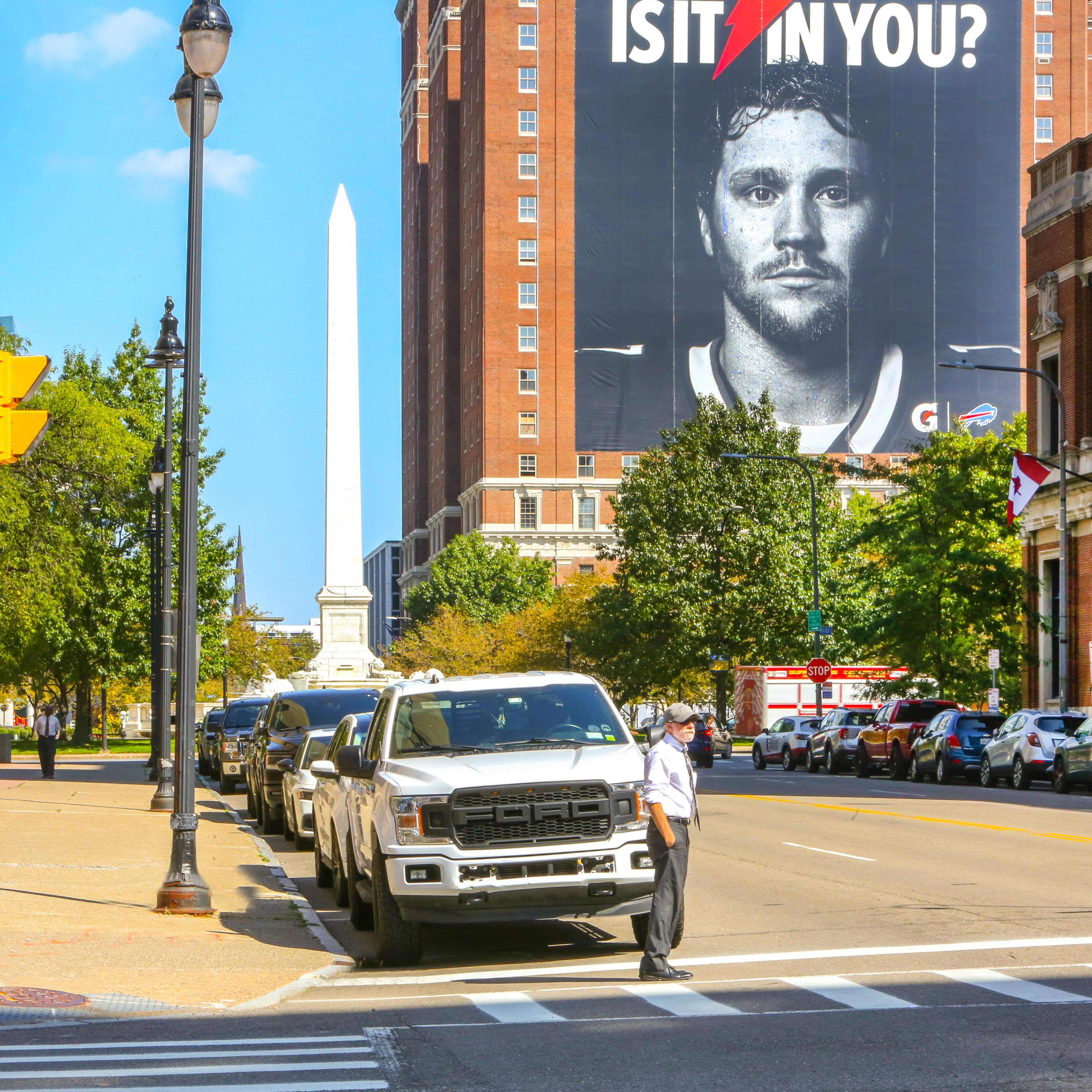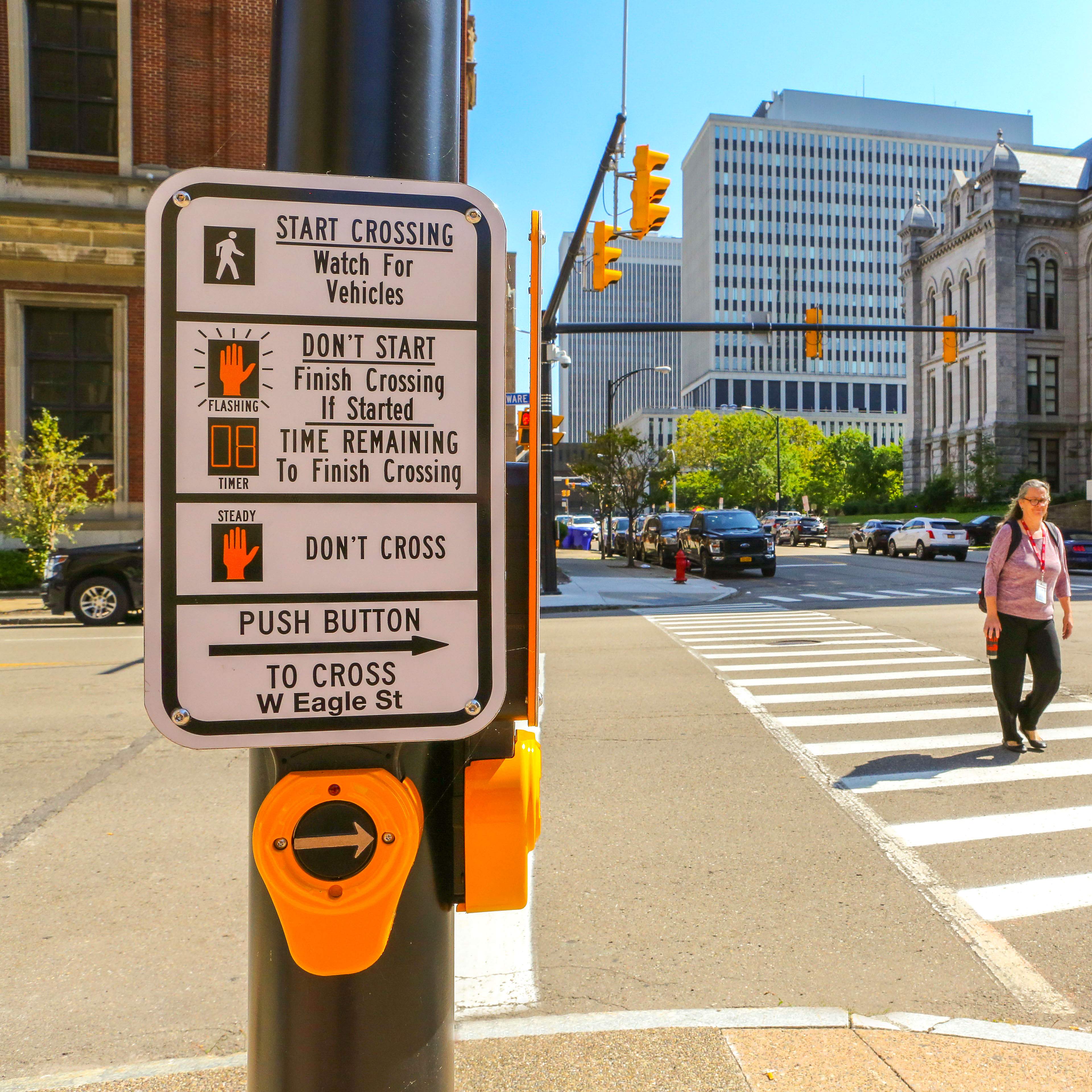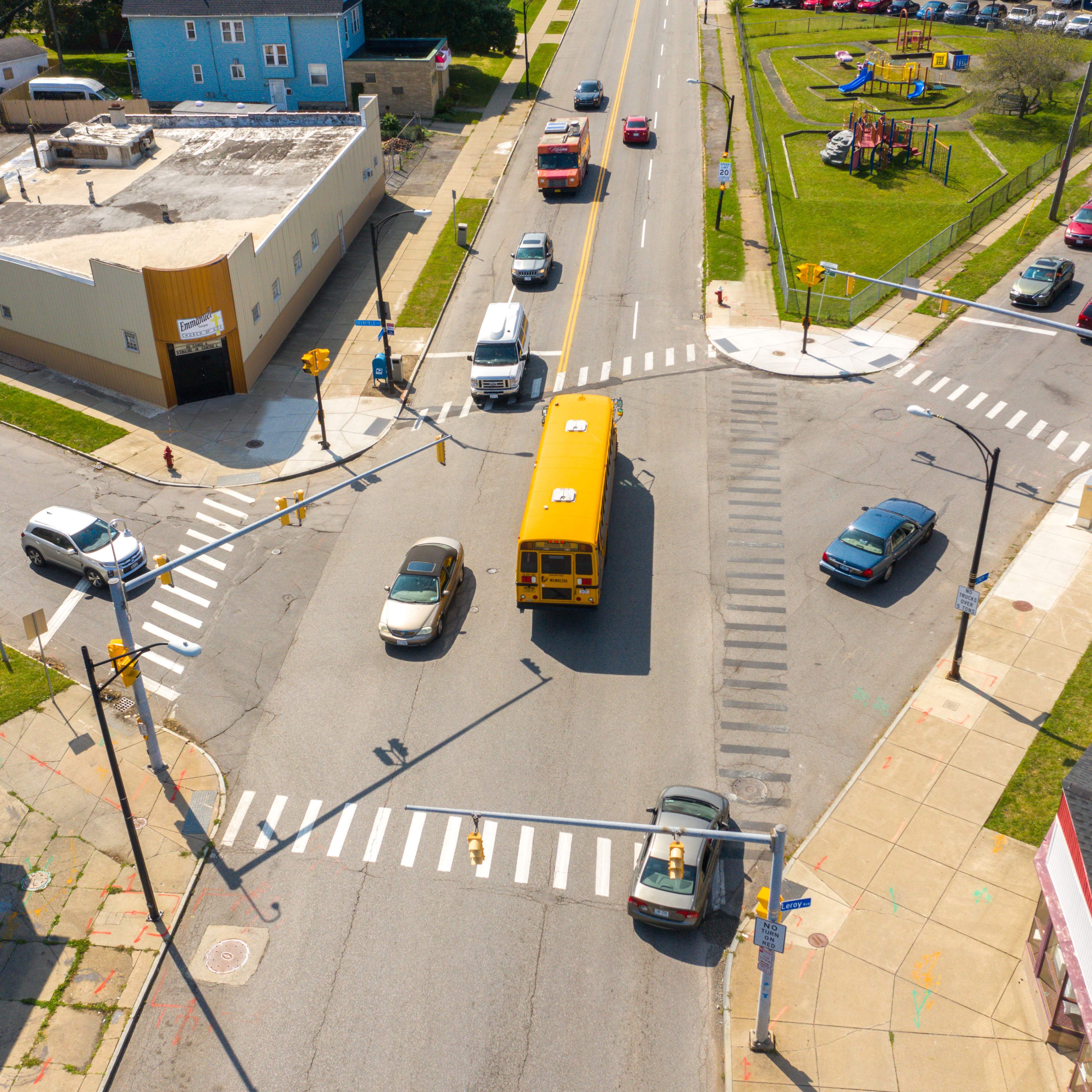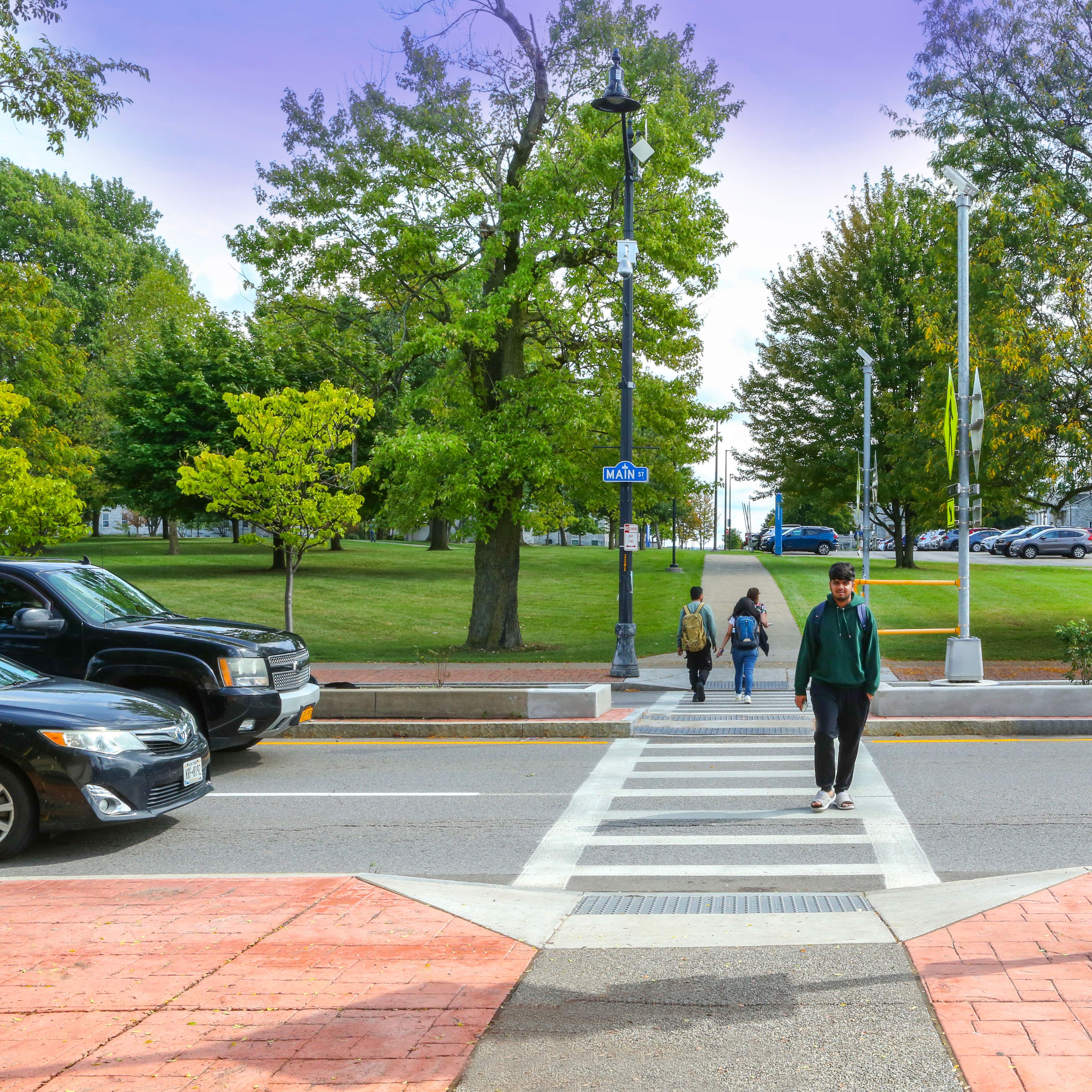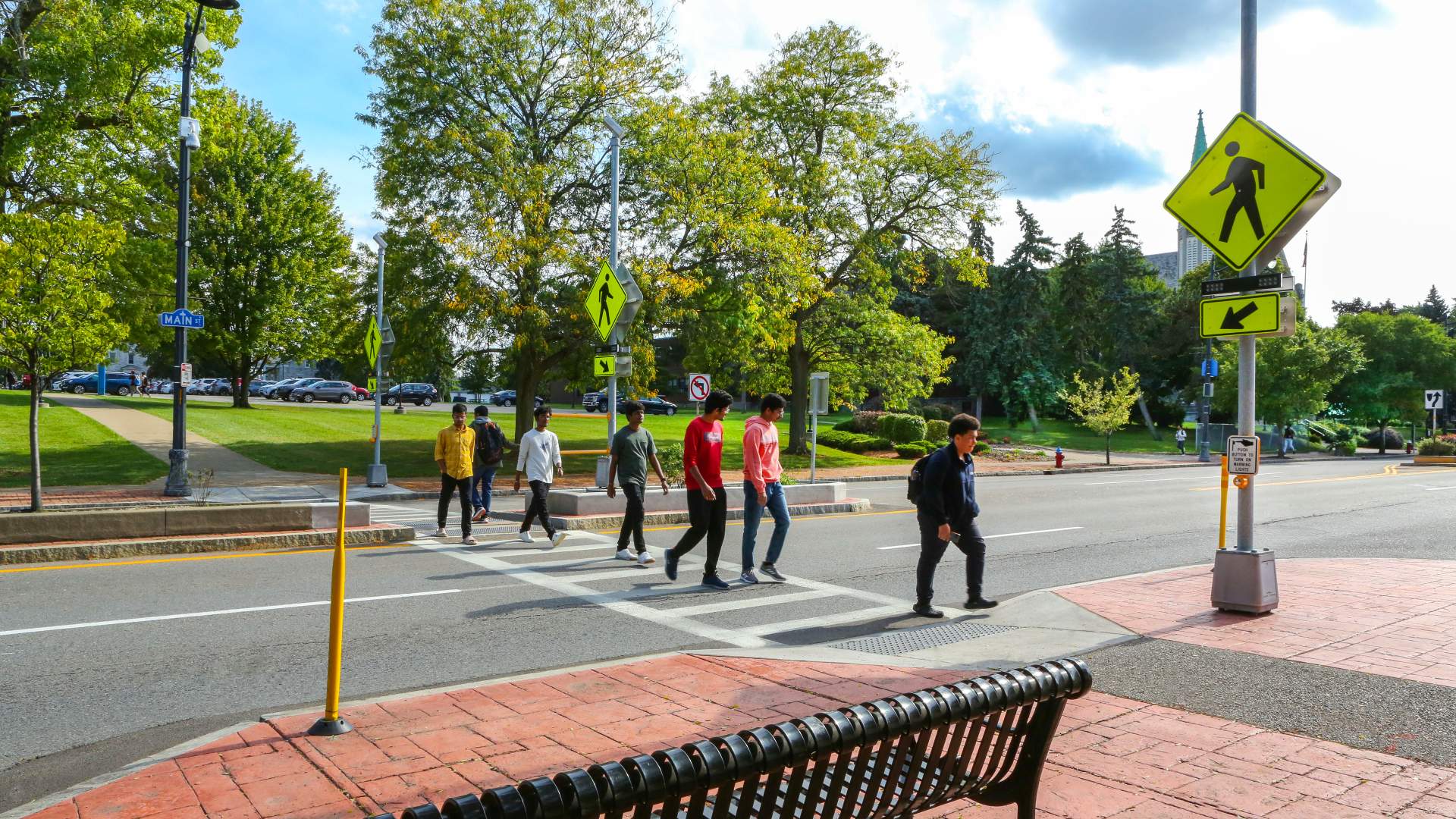Buffalo Pedestrian Safety Action Plan
Buffalo, New York
This project was part of New York State’s first-ever, comprehensive pedestrian safety plan. The New York State Pedestrian Safety Action Plan (PSAP) was implemented by the New York State Department of Transportation and funded through federal Highway Safety Improvement Program (HISP) dollars. Local funds were later added to this project to cover additional City-requested upgrades not covered under HSIP funding parameters. This project proactively addresses safety issues and minimizes the potential for crashes involving pedestrians by implementing low-cost countermeasures on some of Buffalo’s busiest streets and intersections.
At signalized intersections, high visibility crosswalk markings were installed. A combination of pedestrian-activated signals and/or enhanced with extended crossing-times and countdown timers were also installed. These enhanced timers tell pedestrians how many seconds they have to finish crossing the street during the flashing red hand/Don’t Walk phase. Curb ramps were installed to improve accessibility and safety. The intersection of Delaware Avenue and West Eagle Street underwent a complete traffic control-signal system replacement.
The Main Street/Englewood Avenue intersection at University at Buffalo’s South Campus received curb ramps, pavement markings and signs, as well as a new pedestrian crossing. Features of the new crossing include enhanced treatments such as a pedestrian refuge island, a curb extension to shorten the crossing-distance, and attention-grabbing light beacons - Rectangular Rapid Flashing Beacons (RRFB). This intersection received additional traffic analysis to determine the treatment best fit for this highly utilized and under-protected pedestrian route.
Watts developed preliminary plans and costs estimates for 30 intersections around the city. Of these, 23 intersections were advanced through final design for which Watts developed final plans, cost estimates, and other bid documents. All improvements were consistent with the Americans with Disabilities Act (ADA) Standards for Accessible Design.
Locations included: Main Street, Bailey Avenue, Delaware Avenue, Delavan Avenue, Jefferson Avenue, Hertel Avenue, South Park Avenue, and Ontario Street.
